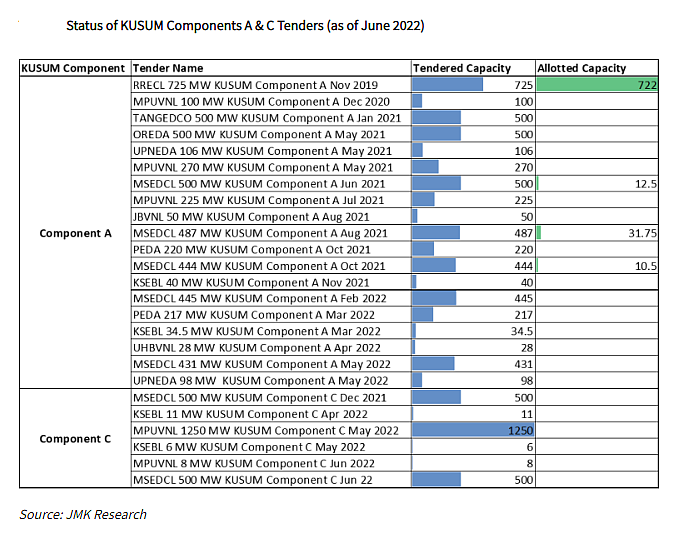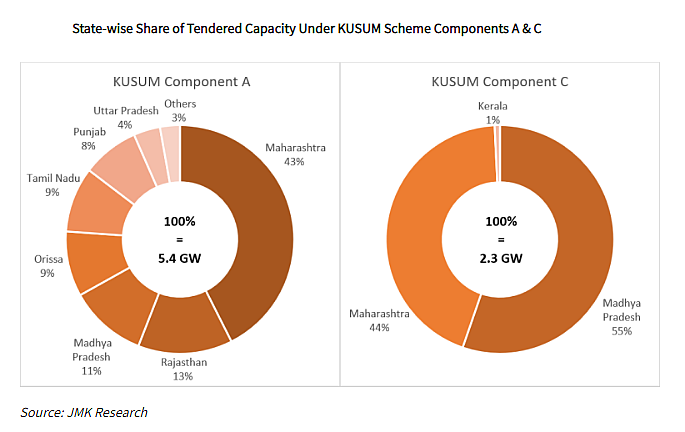The Indian government introduced a nationwide plan for farmers in 2019 with the goal of enhancing energy security and de-dieselizing the agricultural sector. Pradhan Mantri Kisan Urja Suraksha Evam Utthaan Mahabhiyaan (PM-KUSUM) is the name of the scheme.

The KUSUM aims to install 30.8 GW of solar electricity for agriculture by 2022, which will be accomplished by three plan components –
- Component A: To build 10 GW of solar capacity by installing tiny solar power plants with capacities of up to 2 MW.
- Component B: Installation of 20 lakh solar-powered farm pumps on their own.
- Component C: To solarize 15 lakh current grid-connected agricultural pumps.
So far, the performance of the KUSUM plan has been disappointing across all three components.
Component B, on the other hand, has made more progress than components A and C. As of April 2022, the central government has sanctioned around 3.6 lakh standalone solar powered pumps under component B.

As of June 2022, a total of 25 bids (Component A – 19, Component C – 6) have been launched under components A and C. (i.e., in the past 32 months since November 2019). From November 2019 to June 2022, only 7.7 GW worth of bids were published throughout KUSUM components A and C.

The International Energy Agency (IEA) anticipated in December 2021 that India will fall short of its KUSUM objective, with just around one-third of the 30.8 GW target completed between 2021 and 2026. The IEA attributed the gap to the scheme’s “funding and implementation issues.”
Given that the central government established a target of 100 percent de-dieselization of the farm sector by 2024, it is all the more crucial to overcome such significant problems and revitalize the KUSUM program.
The above article is based on ‘JMK Research’ Newsletter; edited by Clean-Future Team






